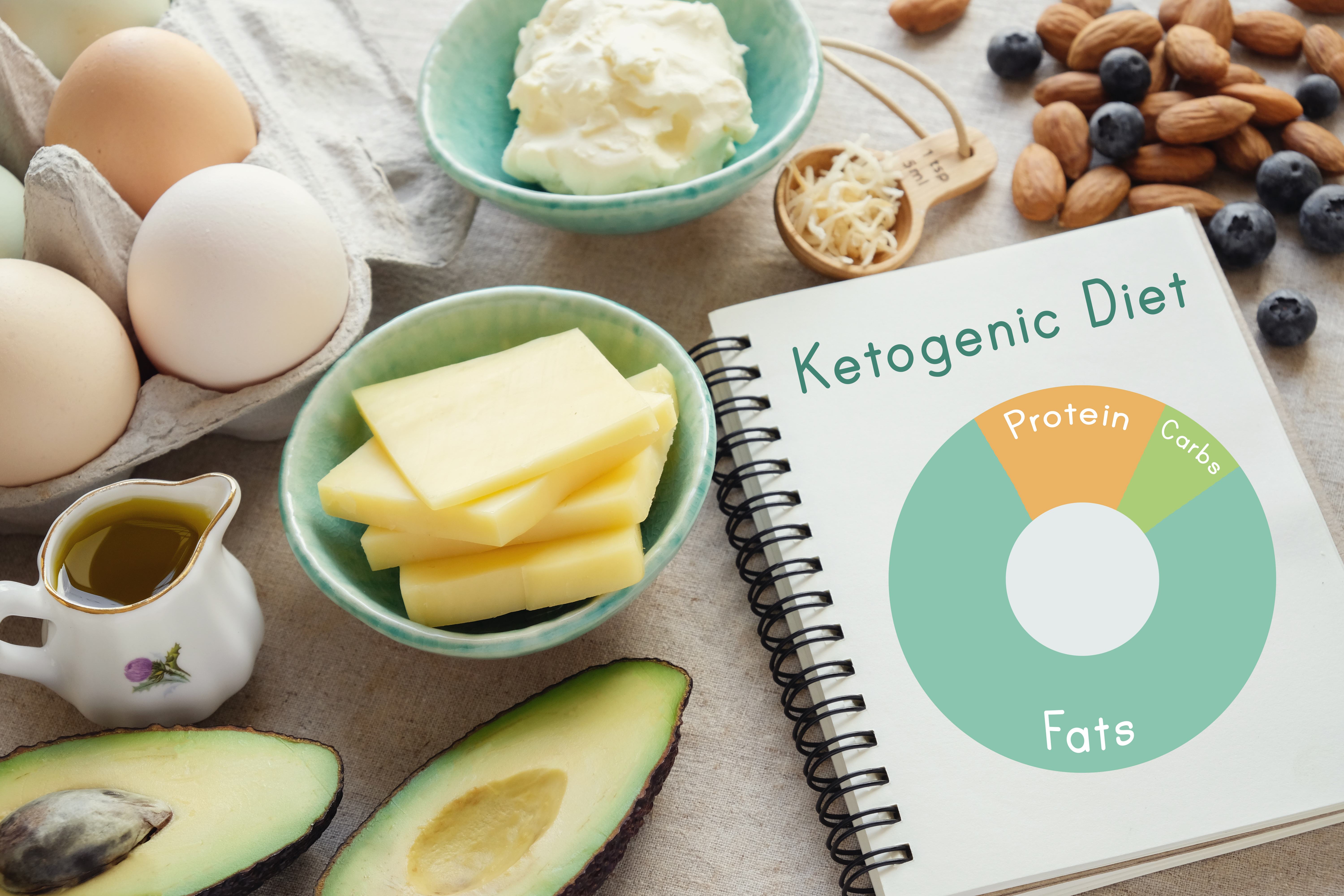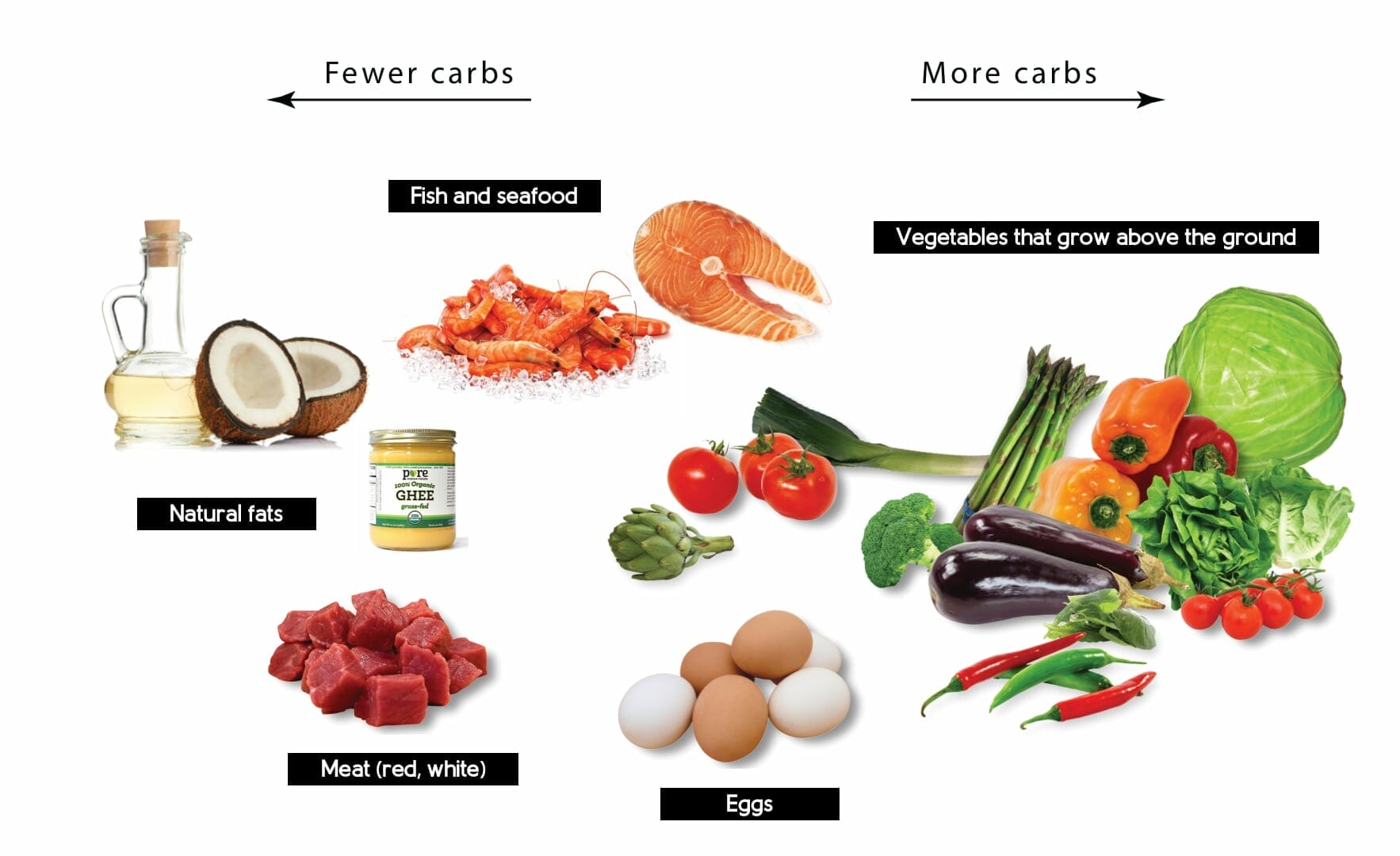Consuming foods that are high in fat and low in carbohydrates is the core idea behind the ketogenic (keto) eating plan. Those following this regimen commonly include various animal proteins, dairy products, vegetables, other plant-based items, and fats and oils in their menus.

The ketogenic diet is a low-carbohydrate, high-fat approach that has become more popular because of its potential advantages for weight reduction, blood sugar control, and lowering the risk of certain cancers and neurodegenerative disorders.
Typically, keto limits carbohydrate intake to per day.
Some keto followers track total carbohydrates, while others monitor net carbs. Net carbs equal total carbohydrates minus fiber, since fiber is not digested and therefore isn’t absorbed by the body.
Below are 20 nutritious foods suitable for the keto diet.
Animal proteins
Fish and shellfish are highly compatible with keto. Salmon and many other fishes contain almost no carbs and are rich in B vitamins, potassium, and selenium.
Carbohydrate content in shellfish differs by species. While and most contain no carbs, and do have some. These can still fit into a keto plan, but you should track their carbs carefully to remain within your target.
Moreover, fatty fish such as salmon, sardines, and mackerel provide abundant omega-3 fatty acids, which may help regulate blood glucose and reduce insulin levels in people with diabetes.
Frequent consumption of fish is also associated with better brain health and a lower disease risk.
The recommend that adults aged 18 and older eat 8 to 10 ounces (oz) of seafood each week.
Meats and poultry are fundamental components of the keto diet.
Fresh and contain no carbohydrates and offer abundant B vitamins and several key minerals. They’re an excellent source of complete protein, which may help preserve muscle mass during a very low-carb regimen, according to a 2016 study.
If possible, opt for grass-fed meat, as it contains more omega-3 fats and conjugated linoleic acid (CLA) than meat from grain-finished animals.
Eggs are a keto staple. One large egg (50 g) has under of carbs and roughly 6 g of protein.
Additionally, eggs have been found to stimulate hormones that enhance feelings of fullness.
It’s important to consume whole eggs rather than only whites because most nutrients are concentrated in the yolk. These include the antioxidants lutein and zeaxanthin, which support eye health.
Although egg yolks are rich in cholesterol, they do not seem to raise heart disease risk.
Dairy and dairy alternatives
There are numerous kinds of cheese, and most are very low in carbs and high in fat, making them suitable for keto.
Just 1 oz (28 g) of cheddar supplies of carbs, 6 g of protein, and a solid dose of calcium.
While cheese is high in saturated fat, it hasn’t been demonstrated to increase heart disease risk. It may even offer protection against cardiovascular disease.
Furthermore, studies indicate that regular cheese consumption may help enhance strength and lessen age-related muscle loss.
Here are some cheeses that tend to be lower in carbohydrates for a keto plan.
Keto cheese list- blue cheese
- Brie
- Camembert
- cheddar
- chevre
- Colby jack
- cottage cheese
- cream cheese
- feta
- goat cheese
- halloumi
- Havarti
- Limburger
- Manchego
- mascarpone
- mozzarella
- Muenster
- Parmesan
- pepper jack
- provolone
- Romano
- string cheese
- Swiss cheese
Plain Greek yogurt and cottage cheese are nutritious, protein-rich foods. Although they contain some carbohydrates, they can be enjoyed in moderation on keto.
Both and cottage cheese have been shown to help reduce appetite and support feelings of satiety.
Either makes a tasty snack on its own, or you can pair them with chopped nuts, cinnamon, or spices for a quick keto-friendly treat.
6. Cream and half-and-half
Cream is the fatty portion of fresh milk separated during processing. Half-and-half is typically made from 50% cream and 50% whole milk.
Both and are very low in carbs and high in fat, which makes them appropriate for keto, though they should be used sparingly.
The recommends limiting foods high in saturated fat. Swapping animal and dairy fats for plant-based fats or polyunsaturated fats is associated with a lower risk of cardiovascular disease and stroke.
That said, the evidence on how saturated fats influence heart disease and stroke is mixed, and further research is required.
Cream and half-and-half are common choices for coffee or for replacing small amounts of milk in recipes on keto.
7. Unsweetened plant-based milk
Several plant-based milks, including , , and milk, are compatible with keto.
Choose unsweetened versions, since sweetened varieties contain too much sugar for keto.
Also, limit oat milk. Even unsweetened oat milk is generally too high in carbohydrates for keto.
Vegetables
8. Green leafy vegetables
Leafy green vegetables are low in carbohydrates and excellent sources of vitamins, minerals, and antioxidants.
Dark leafy greens such as spinach, kale, and collard greens are particularly high in vitamin K and iron.
These greens add volume to meals without significantly increasing carb totals. Herbs like oregano and rosemary contribute lots of flavor with virtually no carbs.
Examples of keto-friendly leafy greens include:
- Salad greens: lettuce, baby spinach, arugula, escarole, and frisee
- Cooking greens: bok choy, collard greens, mustard greens, kale, spinach, Swiss chard, and cabbage
- Herbs: thyme, sage, mint, oregano, dill, parsley, cilantro, basil, rosemary, and lemongrass
9. Peppers
Many pepper varieties are suitable for keto. Though botanically fruits, they’re used as vegetables in cooking.
Small hot peppers can spice up dishes, and jalapeños are great for keto appetizers. Larger mild peppers like bell peppers and poblanos work well in many recipes or can be stuffed for satisfying low-carb mains.
10. Summer squash
Summer squashes such as yellow squash and zucchini are versatile and low in carbohydrates.
Zucchini is especially popular on keto. With a spiralizer, you can make zucchini noodles as an excellent pasta substitute.
Grated zucchini can replace rice or be added to baked goods without changing flavor. Thinly sliced with a mandoline and tossed with olive oil, salt, and pepper, it makes a refreshing cold salad.

and , though technically fruits, are notable among vegetables for being relatively high in healthy fats. They also contain fiber and have low net carbs.
Oleuropein, the primary antioxidant in olives, has anti-inflammatory effects and helps protect cells from damage.
Additionally, regular avocado consumption may improve heart health markers, such as lowering LDL “bad” cholesterol.
Many other nonstarchy vegetables are low in calories and carbs but rich in nutrients and antioxidants.
Low-carb vegetables are excellent substitutes for high-carb items. For example, you can transform cauliflower into cauliflower rice or mashed cauliflower. Spaghetti squash is a natural replacement for spaghetti, and low-carb root vegetables like jicama and turnips can stand in for roasted potatoes or fries.
Other keto-friendly vegetables include:
Keto vegetable list- asparagus
- broccoli
- cabbage
- cauliflower
- mushrooms
- cucumber
- green beans
- eggplant
- tomatoes
- radishes
- Brussels sprouts
- celery
- okra
Other plant-based foods
Nuts and seeds are high in fat and typically low in carbs.
Regular nut consumption is associated with a lower risk of heart disease, some cancers, depression, and other chronic illnesses.
Nuts and seeds are also high in fiber, which can help you feel satisfied, reduce calorie intake, and lower chronic disease risk.
Net carb content varies by type, but several nut and seed choices suitable for keto include:
- almonds
- macadamia nuts
- pecans
- walnuts
- chia seeds
- flaxseeds
Most fruits are too carbohydrate-dense for keto, but berries are an exception.
Berries, notably and , are lower in carbs and higher in fiber. While and may have fewer carbs than many other fruits, they might not fit very strict keto plans.
These small fruits are rich in that may lower inflammation and help protect against disease.
Shirataki noodles are an excellent keto-friendly option. They have less than of net carbs and only about 15 calories per serving because they’re mostly water.
Made from the viscous fiber glucomannan, these noodles offer various potential health advantages.
Viscous fiber forms a gel that slows gastric emptying, which can reduce hunger and blunt blood sugar spikes, potentially assisting with weight and diabetes management.
Shirataki noodles come in shapes like rice, fettuccine, and linguine and can replace conventional noodles in most dishes.
Dark chocolate and cocoa provide tasty antioxidant sources.
Evidence indicates dark chocolate may help lower heart disease risk by reducing blood pressure and protecting arterial health.
Chocolate can be part of a keto diet if you opt for dark chocolate with at least 70% cocoa solids — preferably higher — and enjoy it in moderation.
Fats and oils
Olive oil delivers substantial heart-healthy benefits.
Rich in monounsaturated fats and polyphenol antioxidants, it may help lower inflammation and influence blood pressure, cholesterol, and glucose levels positively.
Olive oil is a pure fat source with no carbohydrates, making it a great foundation for dressings and mayonnaise. It’s best used for low-heat cooking or added to dishes after cooking.
Other good plant-based oils for keto include coconut oil and avocado oil.
Butter and ghee are suitable fats on a keto eating plan. and are also free of carbs.
Ghee is clarified butter produced by heating butter and removing milk solids that surface. It offers an intense buttery flavor and is commonly used in Indian cuisine.
Like other full-fat dairy products, butter doesn’t seem to be as detrimental to health as once believed.
Beverages
Coffee and tea are healthy, carbohydrate-free beverages.
They contain caffeine, which boosts metabolism and may enhance physical performance, alertness, and mood.
Coffee might also lower the risk of diabetes, although more research is necessary to clarify this relationship.
Adding cream or half-and-half to coffee or tea is acceptable, but avoid “light” versions that often use nonfat milk and high-carb flavor additives.
20. Unsweetened sparkling water
If you want a keto-friendly soda substitute, unsweetened sparkling water is an excellent pick.
These fizzy drinks may be flavored yet are usually free of sugar or sweeteners, so they have .
Some varieties are naturally flavored with small amounts of fruit juice and can contain carbs, so check labels carefully because extra carbs can add up fast.
The bottom line
The keto diet can aid weight control, blood glucose management, and other health objectives. Its low-carb, high-fat nature may feel quite limiting at first.
Still, this way of eating includes a broad range of nutritious, flavorful, and adaptable foods that can help you meet your daily carb limit.
To maximize the potential health gains of keto, aim to eat a diverse selection of these foods. Talk with a healthcare provider before starting a keto regimen to ensure it’s appropriate for you.


















Leave a Reply
You must be logged in to post a comment.